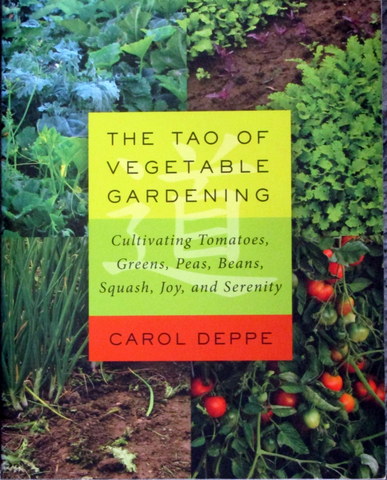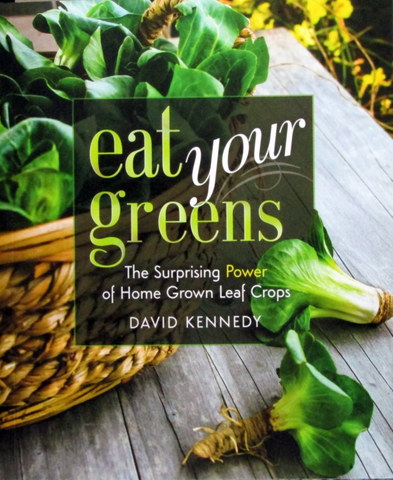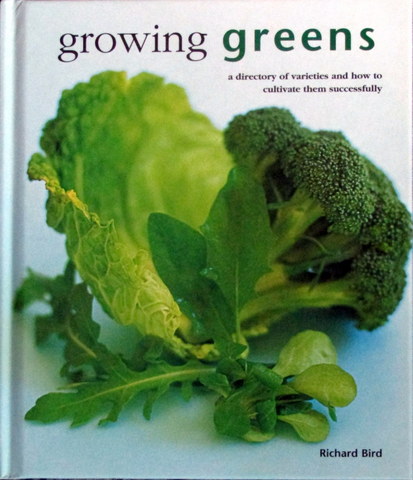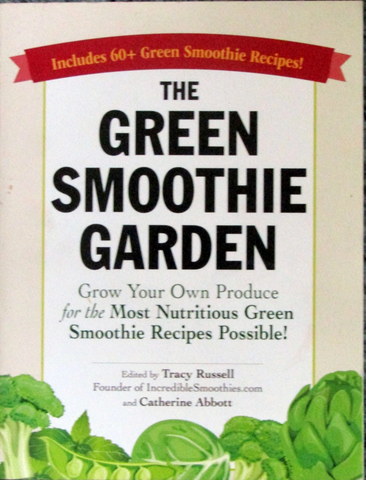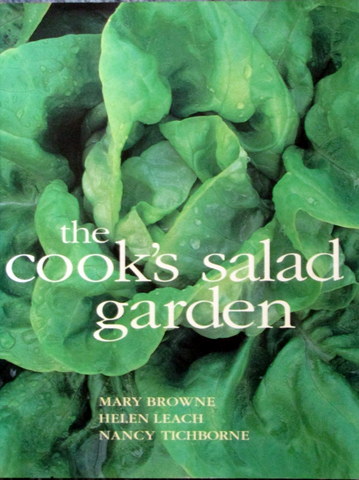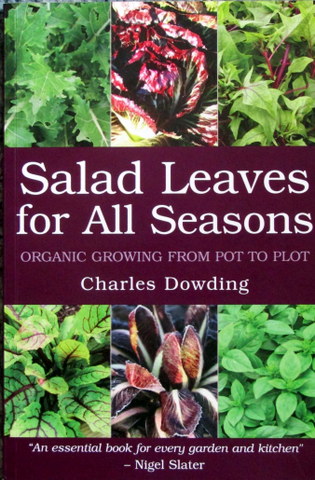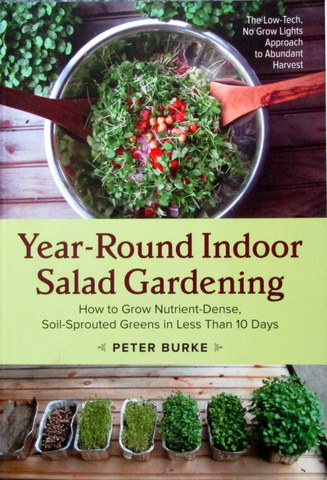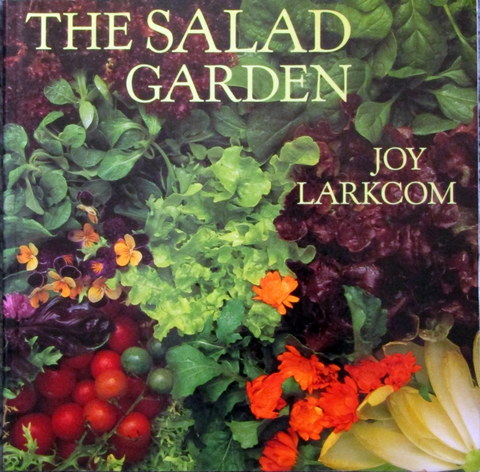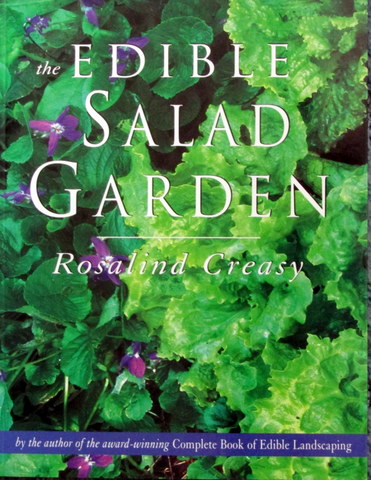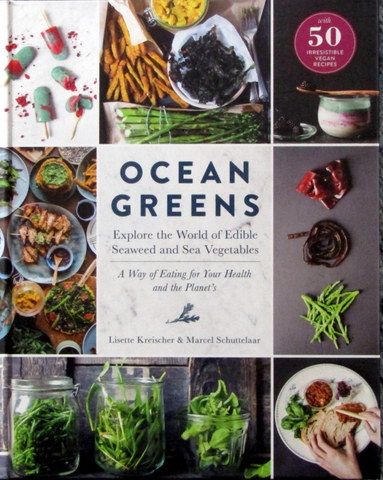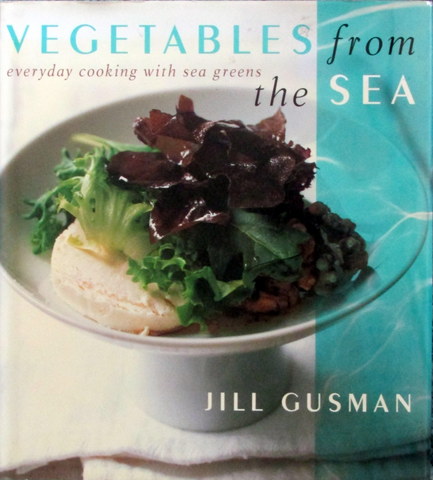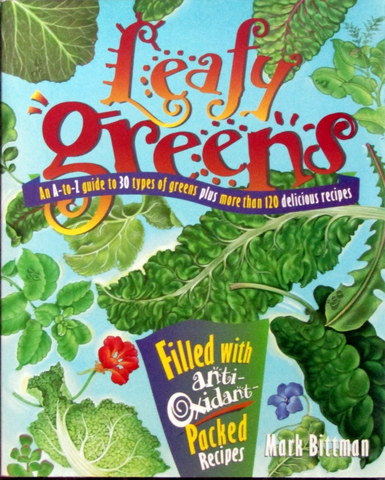I have become fascinated with the growing and consumption of leaf crops, hence the article ‘Sustainability, Resilience and Leaf Crops’ which I followed up with ‘Preserving Leaf Crops‘. This article is about detailing some of the resources available for those, like myself, who want to know more about growing, and eating, green vegetables.
For more information check out Wild Herb Books, and Books about Sprouting and Microgreens.
Green vegetables
The Tao of Vegetable Gardening – Carol Deppe – Chelsea Green Publishing (US) 2015 ISBN 978 1 60358 487 6 – While this book is not solely about leaf crops, it is the book which turned me on to the possibilities of green vegetables in terms of growing and cooking. Chapter 10 (pp 151 – 179) Effortless Effort – The Eat-All Greens Garden introduce a method of growing which maximises yields from a small area, but then also talks about some interesting ways of cooking greens such as soups and stews, oat and greens potage and the southern USA mess o’ greens, which I had heard of but didn’t know there was a recipe for. Lots of good information in this book, some of which applies only to the USA but a lot of which could be applied in other temperate places. There is a section of colour photos near the centre of the book, otherwise no illustrations.
Eat Your Greens – David Kennedy – New Society Publishers (CAN) 2014 ISBN 978 0 86571 751 0 – If you were going to buy only one book on greens then this should be it! Part one – Balancing Our Food System is about how leafy greens cans contribute to the overall task of food growing, particularly at the backyard level. Part two – Getting Started covers some basic growing techniques including stuff like location, soil, pests and diseases and a series of entries of some of the more unusual leaf crops around. Part Three – Some More Advanced Techniques covers ways to get the most out of what you grow with techniques such as year round growing, edible cover crops and multipurpose leaf crops. This section also talks about how to set up for preserving your leaf crops by drying and extracting and using leaf essence, with a small section of recipes at the end. There is one section of colour photos and lots of line drawings throughout. You need this book!
Growing Greens – Richard Bird – Lorenz Books (UK) 2015 ISBN 978 0 754831 40 2 – Nothing earth shattering here, just basic book on how to grow leafy green vegetables, covering info on the types of greens in the first part, mainly brassicas, spinach, chard and lettuce. The second part gives general information on planning and preparing your veggie patch including intercropping and succession planting as well as soil, compost and pests and diseases. The third section cover the specific cultural requirements for 10 different leaf crops. Lots of colour photos.
The Green Smoothie Garden – Tracy Russell & Catherine Abbott (eds.) – Adams Media (US) 2014 ISBN 978 1 4405 6837 4 – Part 1 of this book covers the ‘why’ and then a whole stack of stuff on the ‘how to’ establish a garden to support your green smoothie addiction. Included in this section is tools, greenhouse gardening, care and feeding, harvesting, organic vs non-organic planning etc. Part 2 covers the cultural notes on growing a variety of plants to use in green smoothies, broken down into three sections: leaf vegetables; brassicas & root vegetables and peppers, herbs and others. Part 3 is smoothie recipes, again broken down into the three sections. Personally, I find that green smoothies are only healthy for you if you can keep them down, but each to their own. The book has the occasional line drawing.
Salad Greens
The Cook’s Salad Garden – Mary Browne; Helen Leach; Nancy Tichborne – Random House (AUS) 1997 ISBN 978 1 74051 419 X – There is information on a lot of salad vegetables and leaf crops, including some of the more unusual ones, in this book but not a whole stack of data on each one, two three pages at most, a paragraph at the least. The first part of the book covers wat a salad garden is and the history of salad gardens, the second part covers location, soils, pests and diseases etc of salad gardens. The rest of the book provides details on the growing and using (including the odd recipe) 16 individual greens and some addressed as a category (Asian brassicas, flowers, herbs). Some colour drawings and colour photos.
Salad Leaves for All Seasons – Charles Dowding – Green Books (UK) 2008 ISBN 978 1 900322 20 1 – The book is divided into 4 parts, part one is about growing leaf crops including techniques for small areas, leaf flavours you can choose and ‘cosmic leaves’ (a page or two on moon planting) as well as the usual stuff like soil and pests and diseases. Part two is about cooking and eating leaf crops throughout the year, including recipes. Part 3 provides a paragraph of information on growing a whole stack of leaf veg, including some of the more unusual ones like broad bean shoots, carrot tops and purslane. Part four talks about sowing salad crops indoors for later planting outdoors and growing salad crops indoors during the winter. There are four sections of colour plates in the book.
Year-Round Indoor Salad Gardening – Peter Burke – Chelsea Green Publishing (US) 2015 ISBN 978 1 60358 615 3 – The method detailed in this book is sort of like a cross between sprouting and microgreens, which the author calls “sprouting in Soil”. The book is divided into three parts; part one covers how and why the author developed the method, how it relates to existing methods and the time and tools required. Part two starts with a 1 page ‘get ready’ guide and a 1 page ‘quick start’ guide’ and then goes into considerable detail about the method including soil, trays, fertiliser, planting, growing, greening and harvesting and storage. Part three is a reference on what seeds can be used and some recipes. There are lots of colour photos to illustrate the book.
The Salad Garden – Joy Larcom – Angus & Robertson (AUS) 1984 ISBN 978 0 207 18462 3 – Another fairly basic book covering more than just leaf crops. Part one covers planning the garden, sowing and planting out, manuring and weeding etc., and salad techniques such as cut-and-come-again, blanching and sprouts. Part two covers growing the plants and is divided up into leafy salad plants; stems stalks and fruits; bulbs roots and tubers; and herbs, flowers and wild plants. Part three covers making the salad including types of salad, how to prepare a salad and recipes for salads and dressings. Lots of colour photos, mainly of the plants themselves.
The Edible Salad Garden – Rosalind Creasy – Periplus Editions (HK) (but info is US) 1999 ISBN 978 962 593 290 9 – This book is one of a series (The Edible xxxx Garden) by the author of ‘The Complete Book of Edible Landscaping’. Part one is the art of edible salad gardens with some basic ‘how to’ and interviews with a couple of salad gardeners. Part 2 Is an encyclopaedia of salad greens giving some, how to grow it, how to prepare it, varieties available (in the US) and colour photos of each plant. Over 15 plants or plant groups (eg oriental greens) are covered with some unusual ones like orach and minutina. Part three, almost the last half of the book, is devoted to recipes. Lots of colour photos.
Sea Greens
Ocean Greens – Lisette Kreischer & Marcel Schuttelaar, Et al. – The Experiment Publishing (US) (originally published in Dutch) 2016 ISBN 978 1 61519 352 3 – The first quarter of the book is the how and why of seaweed: what it is, what’s in it, the taste, cultivation and harvest and some do’s and don’ts around seaweed. The rest of the book is recipes, broken up under the headings of toppings, hors d’oeuvres, soup, salads, entrée’s based around varying seaweeds. Lots of colour photos.
Vegetable from the Sea – Jill Gusman – William Morrow (US) 2003 ISBN – The first part of the book is and introduction covering how to use the book, history, cultivation and harvesting etc. The second part (Meet the Sea Vegetables) covers 15 types of seaweed and lists for each one: general information about the seaweed, appearance/how to buy, characteristics, culinary uses, how to prepare it and nutritional value. The rest of the book is filled with recipes under the headings: appetisers, soups and stews, salads, entrees, side dishes, rolls, wraps and sandwiches, condiments, sweets and treats. There are lots of colour photos.
Recipe Books
Wild About Greens – Nava Atlas – Sterling Publishing (US) 2012 ISBN 978 1 4027 8588 7 – The first part of the book talks about why greens are important, buying and preparation tips, preserving, the gives and introduction to 17 greens or types of greens and lists the various recipes for each type. It then goes through basic preparation and cooking styles which suit the inclusion of green vegetables. The remaining chapters cover recipes for greens with beans, grains, pasta & other veg; salads, dressing and dips; greens in soups and stews; green juices and smoothies. There is a full colour plate section in the middle and line drawings throughout the book.
Leafy Greens – Mark Bittman – Macmillan (US) 1995 ISBN 0 02 860355 9 – The book starts off with entries for over 35 greens and sea greens, with each entry covering: varieties, buying, nutritional information, suggestions for cooking, substitutes and a paragraph or two of general information. The rest of the book provides a series of recipes, broken up under the headings of: soups, salads, side dishes, light dishes and main courses. There are quite a few line drawings throughout the book.



